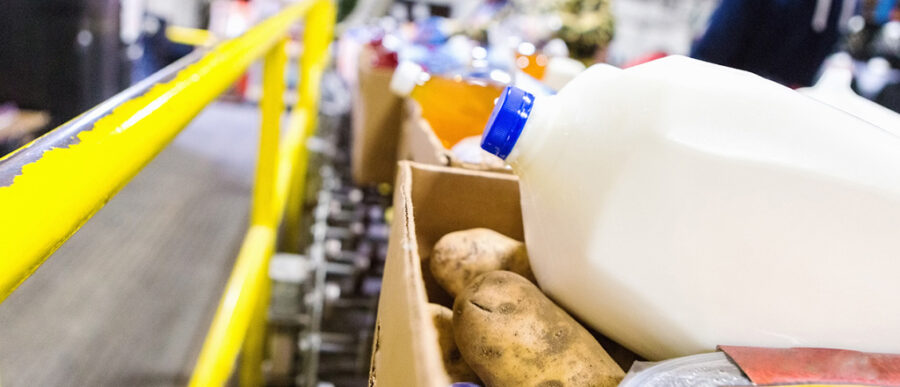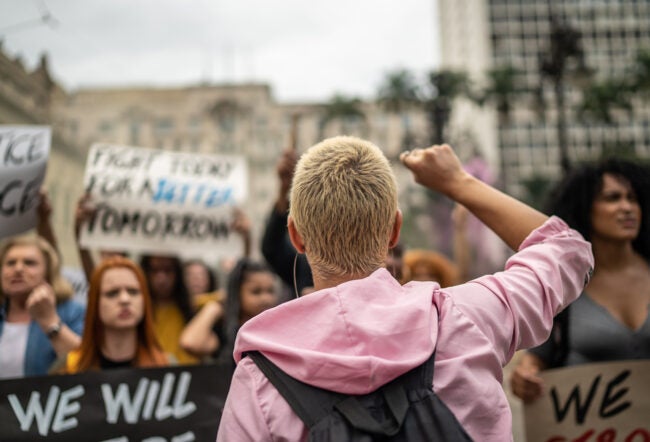Firms have an important role to play in the response to COVID-19, but they can’t do it alone. Instead, they should consider the unique ability of the nonprofit sector to serve hard-to-reach populations during disasters, writes Wharton management professor Aline Gatignon in this opinion piece.
LVMH, the parent company to Luis Vuitton, is repurposing its supply chains to make hand sanitizer in France. Facebook is matching $20 million in online donations to the United Nations Foundation and the World Health Organization’s COVID-19 Solidarity Response Fund. China’s Alibaba founder Jack Ma is donating face masks and coronavirus testing kits to the U.S. and to countries across Africa. Near my home, &Pizza is offering to deliver free pies to healthcare professionals.
Companies shouldn’t be retrenching and waiting out the coronavirus pandemic until they can go back to business as usual. They need to be part of the solution, now. The private sector has suffered a loss of public trust around the world recently, as have many other collective institutions – including our governments. This is the time to reclaim that trust: Business leaders should step up and demonstrate the power of the private sector to mobilize resources, generate innovative solutions and scale them up fast.
But they shouldn’t be doing it alone. Dealing with this pandemic will also require partnering with nonprofit organizations to make sure all our communities around the world are getting the support they need. In a recent article in Strategic Management Journal (see video abstract below), Luis Ballesteros and I show that firms can funnel more donations for disaster relief in developing countries when they do so in partnership with nonprofit organizations — more broadly, firms should consider the unique ability of the nonprofit sector to serve hard-to-reach populations, in places where the infrastructure and services make it particularly complex for businesses to operate.
In other words, when companies have resources that they can deliver to the frontlines quickly, they should do it fast. This is typically the case in more economically developed economies and/or in places where companies have local business operations. For example, a Houston-based furniture company used its trucks to save victims of Hurricane Harvey in 2017 and offered them temporary shelter in its stores. After the Tabasco Flood in Mexico in 2007, CEMEX employees were able to help with boots on the ground and construction materials.
“Solving this pandemic will require partnering with nonprofit organizations to make sure all of our communities around the world are getting the support they need.”
But in many other situations, companies should consider partnering with nonprofit organizations instead. The nonprofit sector has greater accumulated experience dealing with disasters and humanitarian crises. So, situations that are completely new and unexpected for the private sector are in fact business as usual for many nonprofits. International disaster relief organizations specialize in responding to this type of event. Consider the International Federation of Red Cross and Red Crescent Societies (IFRC): Last year, it celebrated its 100-year anniversary of providing disaster relief across the globe. Or take the the United Nations World Food Program (WFP), which provides 90 million people with food assistance every year in more than 90 countries. It was this specialization that prompted global logistics provider TNT to partner with WFP in 2002, forming the core of its corporate social responsibility in developing countries for a decade.
Building on this experience, the nonprofit sector has developed valuable skills for dealing with the logistical and relational challenges that make disaster response so difficult in underserved settings such as developing countries. Logistical challenges make it more difficult to get relief items (e.g., food, medicine, tents and blankets) from where they are to where they need to be. Figuring out who needs what and when, where those people are and how to get there (i.e., what operations management refers to as “last-mile logistics”) is a difficult task. That’s especially true when affected populations were already hard to reach in the first place, because of limited infrastructure and poverty. When governments don’t have strong emergency preparedness plans in place and don’t have the ability to manage the immediate recovery process effectively, nonprofits’ experience and flexibility become all the more necessary.
These logistical challenges are compounded by relational challenges: It takes a village to respond to disasters, especially in countries where government response is weaker. Local, national and international relief coordination then becomes even more critical for rapid relief and lasting recovery. Nonprofit organizations have pre-developed networks that businesses typically don’t have access to, and which can be mobilized fast. They know the affected populations and their needs better; they are connected to the web of relief organizations that will be involved; and they understand how to work with local governments. Nonprofits sometimes get a lot a flack around bureaucracy and accountability – but it’s important to recognize the considerable strengths they can bring to the table.
“Situations that are completely new and unexpected for the private sector are in fact business as usual for many nonprofit organizations.”
Tackling COVID-19 with Cross-sector Partnerships
Our findings also have implications for the current crisis, and the role of cross-sector partnerships in fighting COVID-19. If LVMH can repurpose its production lines to meet the gap in hand sanitizer in its home market of France, or if &Pizza can deliver to hospital workers nearby, they should do that right away. But no man (or woman) is an island – we need to address this pandemic on a global scale if we are to stop it, and we can’t afford to overlook any country or community. For example, Sub-Saharan Africa initially seemed like it might be spared the pandemic, but has now been hit too. Despite having younger populations, many of these countries also have a higher proportion of people who are already struggling with infectious diseases (e.g., HIV, tuberculosis) and weaker health systems to start with. Nonprofits like the North Star Alliance have found innovative ways of reaching these population groups and have already developed experience dealing with similar situations such as the Ebola crisis. The private sector needs to take note of those skills and work with the nonprofit sector to help in these places.
Furthermore, this crisis has tragically underlined the fragility of underserved communities in more economically developed countries too. New York City debated closing public schools because of the 114,000 homeless children for whom school was their only shelter. It’s particularly challenging for first-generation, low-income college students to immediately move off campus and follow classes online. Uninsured or underinsured Americans worry about whether they can get tested and go to the hospital if they get sick, or if they can afford to take time off work. If they are retired, they may be physically and financially vulnerable: 9.5 million seniors are threatened by hunger, one in four live alone, and they are the population group most at risk from COVID-19.
Because these communities are underserved by their governments (and often the private sector too), nonprofit organizations have been working to fill those gaps for years. I’ll use a local example from Philadelphia to illustrate, but there are opportunities to match corporations with nonprofit partners to address the needs of underserved communities everywhere you look.
“Leaders who can pull together and work across the private, nonprofit and public sector to forge collective solutions will ultimately come out ahead.”
Per The Philadelphia Inquirer, local restaurants that are being forced to close or seriously scale down their operations to delivery could consider partnering with nonprofit organizations to donate food that might otherwise go to waste. The article notes that potential partners abound. They need support right now, and they can boost the impact of corporate donations by leveraging their complementary strengths.
Consider Meals on Wheels America. The nonprofit started in Philadelphia in 1954 and has been providing meals for isolated seniors ever since: They understand the issues, know the community and have networks in place to respond to the crisis. Financially vulnerable and isolated seniors aren’t the typical population served by upscale restaurants in center city Philadelphia, but they need to be protected from the pandemic – for humanitarian reasons above all, and also because protecting them is key to getting us all back to normal.
So when companies consider how they can help, they should consider how they can help everyone, not just those they are best equipped to help in the moment. And for populations and geographies where companies might not be sure where or how to help, they should reach out to nonprofit organizations and support them.
I’m heartbroken for all the small businesses that don’t have the resources to weather current restrictions for weeks on end, and for the employees at companies big and small who are worried about their jobs and their families’ livelihoods. I worry about everyone who can’t work remotely, and for all those companies who might have trouble keeping their production going. It’s surely tempting to retrench, cut down and wait for things to get better, for governments to work this out. And for some, that may be the only viable solution at the moment.
But leaders who can pull together and work across the private, nonprofit and public sector to forge collective solutions will ultimately come out ahead. They will benefit when our societies and economies demonstrate greater resilience and bounce back faster, when their external stakeholders take notice and lend support down the line, when their employees take pride in being part of their shared efforts, and when as a result, they develop sustainable and unique business models that are more deeply embedded within society.



